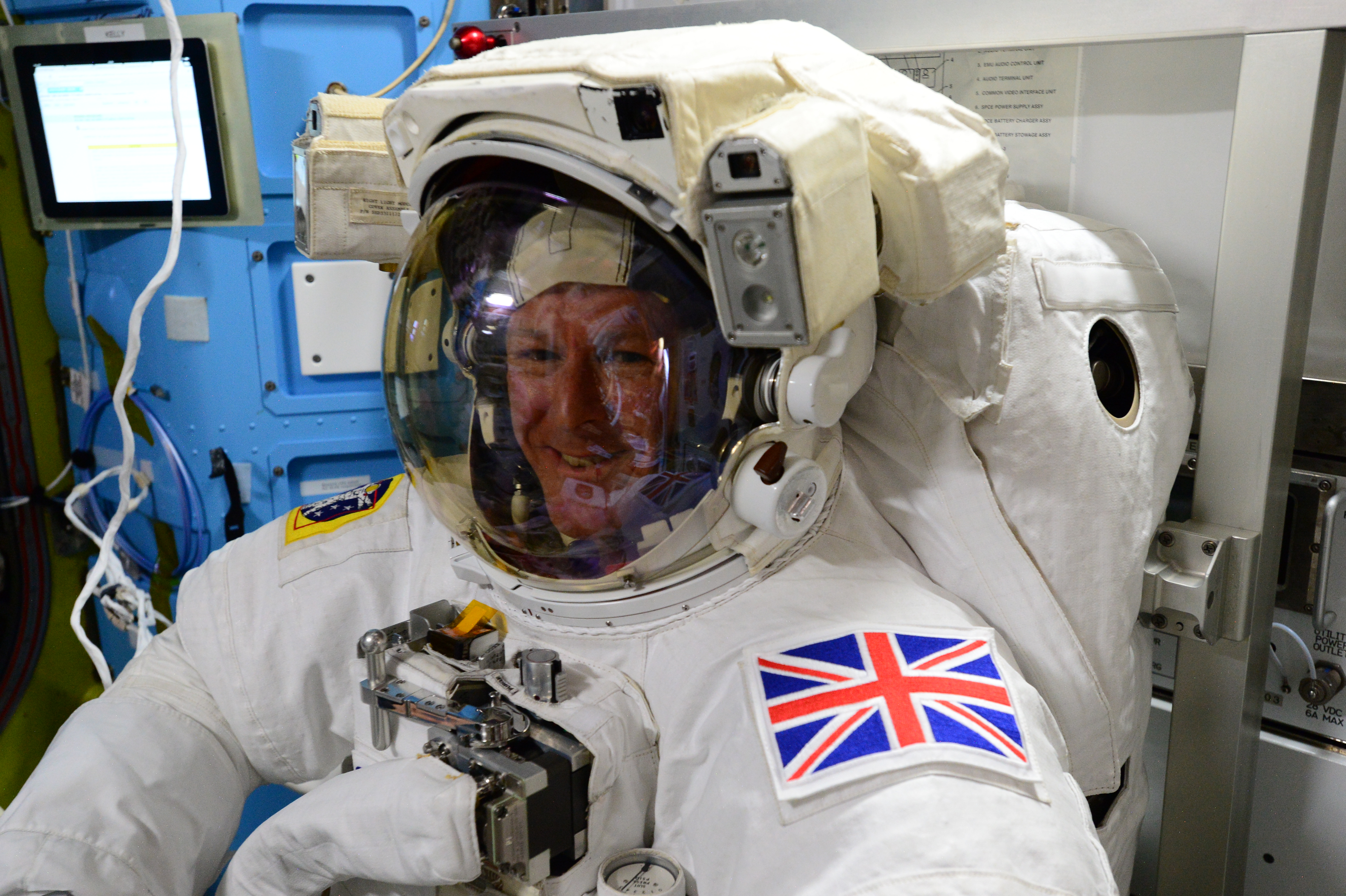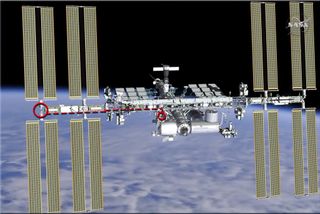First British Space Station Astronaut Takes 'Electrifying' Spacewalk Today

NASA astronaut Tim Kopra and European Space Agency (ESA) astronaut Tim Peake will take venture outside the International Space Station on a spacewalk today (Jan. 15) to repair one of the station's eight vital power channels.
Peake is the first British astronaut to visit the International Space Station, and this will be his first spacewalk. Kopra, who has flown once before, went on a spacewalk with NASA astronaut Scott Kelly in December. This is his third spacewalk. You can watch the spacewalk live here beginning at 6:30 a.m. EST (1130 GMT), courtesy of NASA TV. The two spacewalking Tims are expected to exit the station by about 7:55 a.m. EST (1255 GMT).
Peake and Kopra plan to spend about 6.5 hours working outside the space station during today's repair spacewalk. On Friday, Nov. 13, the space station lost one of the eight channels bringing power from the outstretched solar panels to the station itself. While it can function with only seven, any additional failure would be a problem — so station officials scheduled a spacewalk to replace the shorted-out voltage regulator responsible for the failure. The astronauts will rush to replace it during one of the space station's 31 minute "nights," when the station is shielded from the sun by the Earth's shadow, NASA officials said during a news briefing. [Amazing Space Photos by Astronaut Tim Peake]
Kopra will command the mission, so he'll head out first after Kelly and Russian cosmonaut Sergei Volkov help the astronauts don their spacesuits. The duo will make their way all the way out along the arm of the station — almost as far on the space station as one can go from the airlock, NASA officials said.

The mission is also a time trial: the failed voltage regulator can only be replaced when the space station is in shadow, just in case it harbors any remaining power. The replacement process takes about 15 minutes, if all goes well, but NASA officials have developed contingency plans if they need to stop work in the middle and come back to it once the surroundings darken again. (NASA astronauts completed similar regulator replacement mission in 2014.)
Afterward, the spacewalkers will work their way through some other tasks outside the space station including laying a long communications cable — this part could take more than three hours, ESA officials said in a blog post — add back a valve and release a bolt.
Kopra, Peake and Russian cosmonaut Yuri Malenchenko arrived at the space station in December, and they're joined by Kelly, Volkov and Russian cosmonaut Mikhail Kornienko. Kelly and Kornienko will finish a one-year stay in space in March; Volkov will return then as well, leaving Kopra, Peake and Malenchenko to complete their six months in orbit.
Get the Space.com Newsletter
Breaking space news, the latest updates on rocket launches, skywatching events and more!
The lead spacewalk officer on the ground, Paul Dum, narrated an animated walkthrough of the spacewalk here, capturing the mission's complex choreography:
Email Sarah Lewin at slewin@space.com or follow her @SarahExplains. Follow us @Spacedotcom, Facebook and Google+. Original article on Space.com.
Join our Space Forums to keep talking space on the latest missions, night sky and more! And if you have a news tip, correction or comment, let us know at: community@space.com.

Sarah Lewin started writing for Space.com in June of 2015 as a Staff Writer and became Associate Editor in 2019 . Her work has been featured by Scientific American, IEEE Spectrum, Quanta Magazine, Wired, The Scientist, Science Friday and WGBH's Inside NOVA. Sarah has an MA from NYU's Science, Health and Environmental Reporting Program and an AB in mathematics from Brown University. When not writing, reading or thinking about space, Sarah enjoys musical theatre and mathematical papercraft. She is currently Assistant News Editor at Scientific American. You can follow her on Twitter @SarahExplains.